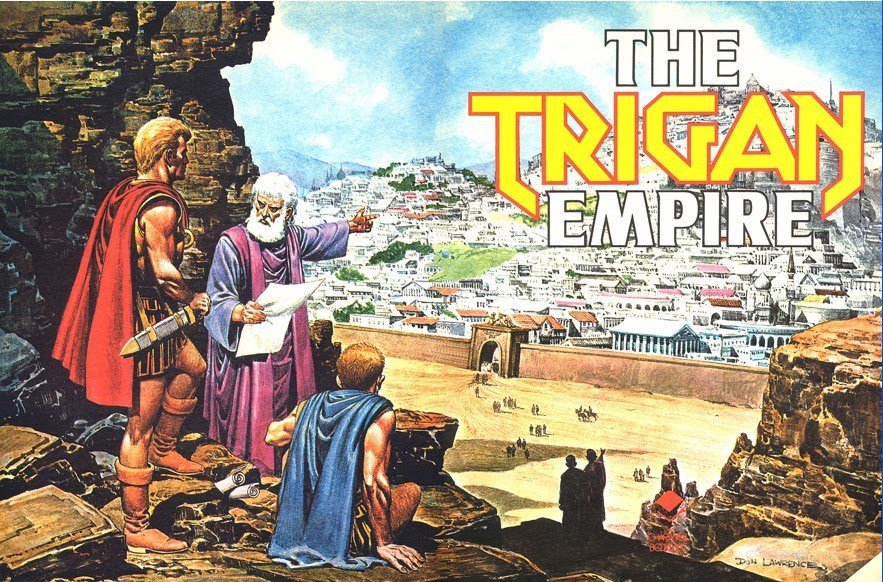The Trigan Empire became one of the best-loved British comic strips of the post-war era: an epic tale that brought the Roman world into the space age.
Let's take a look at it...
Let's take a look at it...

The Trigan Empire began as the main strip in Ranger, "The National Boys' Magazine." Launched in 1965 by Fleetway the magazine ran for a mere 40 issues. 

Mike Butterworth had been commissioned to write The Trigan Empire for Ranger, and Fleetway paired him with illustrator Don Lawrence. It was a wise decision; the two worked very well together. 

The Trigan story starts with a crashed alien ship, found in a Florida swamp. Its crew of giants are dead, but its records are eventually translated, and the history of the aliens is revealed... 



And what a history! The Trigan Empire is very much the story of Rome set in space. Three brothers - Trigo, Brag and Klud - found a city on a hill on the planet Elekton and battle their rival city states for supremacy. 

The Trigans look and dress like Romans, and their capital city is founded on five hills. As they develop, the story grows into a science fiction epic of empire, conquest and political rivalry. 

Trigan Empire stories were done in inks rather than acrylics. It was a tricky medium to work with, but Don Lawrence quickly mastered it and the results were stunning! 

Ranger magazine folded in 1966 and the Trigan Empire story moved to the more cerebral Look And Learn, an educational comic that parents and schools approved of. 

Mike Butterworth and Don Lawrence worked together on The Trigan Empire until 1976, when a royalty dispute made Don quit Fleetway to work on the Dutch comic Storm. Mike later worked with Michael Moorcock on a Hawkwind science fiction novel. 



A number of other artists worked on the strip after Don Lawrence left Fleetway, including Oliver Frey, Ron Embleton and Miguel Quesada. 





The Trigan Empire stories were translated into many languages, and old stories were re-published in the short-lived Anglo-Swiss comic Vulcan. 



Alas the Trigan Empire finally fell in 1982, when Look And Learn finally ceased publication. It had lasted 17 years and almost 900 instalments. 

The Trigan Empire stands the test of time due to its high quality artwork and sprawling universe of stories. It's a great concept, so do try to look up a few issues if you can.
More stories another time...
More stories another time...

• • •
Missing some Tweet in this thread? You can try to
force a refresh






















